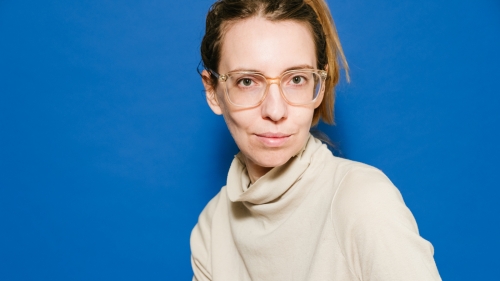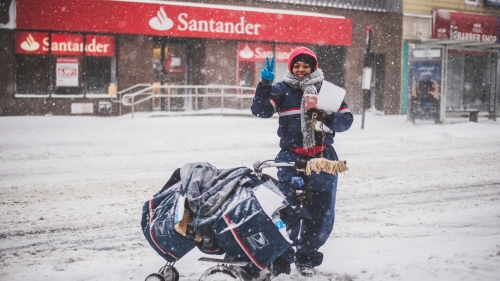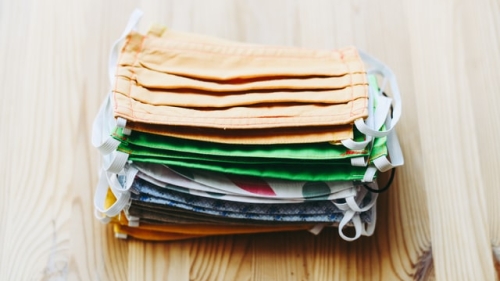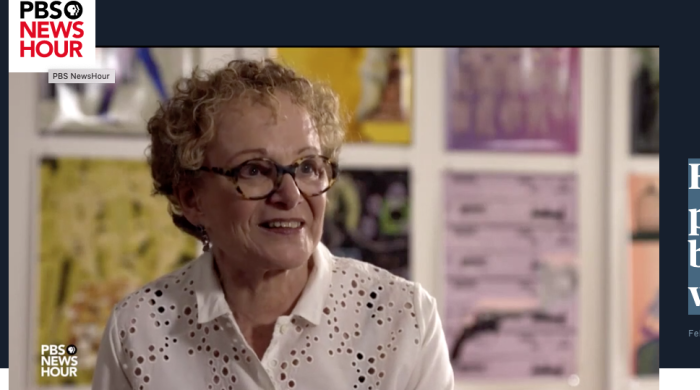Rachel Lifter, clinical assistant professor and program director of Steinhardt's costume studies program, is an expert in the social and cultural analysis of fashion. She is the author of Fashioning Indie: Popular Fashion, Music and Gender (Bloomsbury 2019), which charts the gendered and racialized transformation of indie from British music subculture to international fashion phenomenon. Her writing also appears in Communicating Fashion Brands (Routledge 2020), Fashion Stylists (Bloomsbury 2020), Fashioning Professionals (Bloomsbury 2018), Fashion Cultures Revisited (Routledge 2013) and the exhibition catalogue for “Clash – Resistance in Fashion” (Herning Museum of Contemporary Art, 2014). We spoke with her about the influence of contemporary culture on fashion.

You're currently studying the impact of the AIDS epidemic on the New York fashion industry. Can you share some insights from your research?
This work is in its infancy, so I can speak to the framing and intentions of the project. It is primarily an oral history, and it started with conversations with my fashion instructors. When I was a faculty member at Parsons, I took several continuing education classes, and part of the pleasure of those classes was hearing the instructors speak about their careers in New York’s fashion industry. One day, my patternmaking instructor told me about a talented print designer with whom she used to work. The story ended abruptly when she said, “He died. AIDS, of course.” This project is an attempt to gather stories about this print designer and others, to illuminate the work and lives of a whole generation of fashion practitioners, and to explore the impact their premature deaths had on both the fashion industry and the American fashion imagination. Almost by default, the project is also an oral history of working in New York fashion in the 1980s. In addition to stories of colleagues and loved ones lost, my informants offer tales of collaboration and double-crossing, trade shows, and 7th Avenue showrooms, spats with disco divas and friendships with world-famous artists. There is both pleasure and pain in these stories, and I see it as an immense responsibility to hold the two in tension, in honor of the lives they represent.
When we talk about changes in fashion and style, we’re not just talking about a look. We’re also talking about how multiple and intersecting identities are formed through this look as well as how an enormous and heterogeneous industry is mobilized to produce it. "

A USPS mail carrier in uniform. (Victória Kubiaki/Unsplash)
Can you tell me about your USPS letter carrier uniform research? What intrigues you about this work?
I’m very excited to say that this work will take the shape of a project-based class within the MA Costume Studies program this spring. The USPS letter carrier uniform is a fantastic object through which to show students the interdisciplinary nature of research on fashion and dress. We will look at the uniform’s history and present; gendered and geographical variations as well as individual style choices in how it is worn; the (formal and informal) industries and economies that underpin its production; and the way its representation shapes popular understandings of Americanness. I'm working now to secure access to materials from the Smithsonian National Postal Museum and the USPS Archives as well as to engage participation from current and former letter carriers and uniform suppliers. Although I’ve wanted to explore this uniform for a while, the project has taken on increasing urgency in the last few weeks, amid threats to defund and effectively devastate the USPS before the election. With this news, I'm more and more convinced about the necessity of contributing to a broader, more illustrative picture of this integral governmental body and the 600,000 essential people who make it work.

(Photo credit: Vera Davidova/Upsplash)
I read that after 9/11 New York City fashion became more casual because people wanted to be able to move unencumbered by tight clothing if there was another terrorist attack. How will fashion be influenced by the corona virus pandemic?
It seems almost too obvious, but one immediate change is that many people are now wearing facemasks or are otherwise covering their noses and mouths with scarves, handkerchiefs and - in a pinch - shirts pulled up over their noses. In the US, such dress practices are totally new and now politicized. As a result, I am curious to compare current popular debates on face masks with earlier debates on other controversial head coverings: hijabs and hoodies. What does this struggle over the meaning of covered bodies tell us about the ideas and values that are shaping popular culture? I am also curious to explore the emergent economies of mask-making. For example, the online marketplace Etsy has seen an incredible jump in sales, as independent sellers are finding a huge audience for homemade masks. In contrast, although Los Angeles Apparel was one of the first established companies to pivot its production facilities to masks, its factories have been shut down multiple times because of COVID-19 protocol violations and subsequent outbreaks and even deaths among employees. What do these differences reveal about the organization of labor and textile resources across different sectors of the fashion industry? In short, when we talk about changes in fashion and style, we’re not just talking about a look. We’re also talking about how multiple and intersecting identities are formed through this look as well as how an enormous and heterogeneous industry is mobilized to produce it. Charting the impact of the pandemic will demand we explore these multiple sides of fashion.
Related Articles
Susan Unterberg (Art Education) Alumni Profiled on PBS
The work of women artists makes up only three to five percent of major museums' permanent collections in the US and Europe. Many of these artists struggle financially - but Susan Unterberg is trying to change that.

